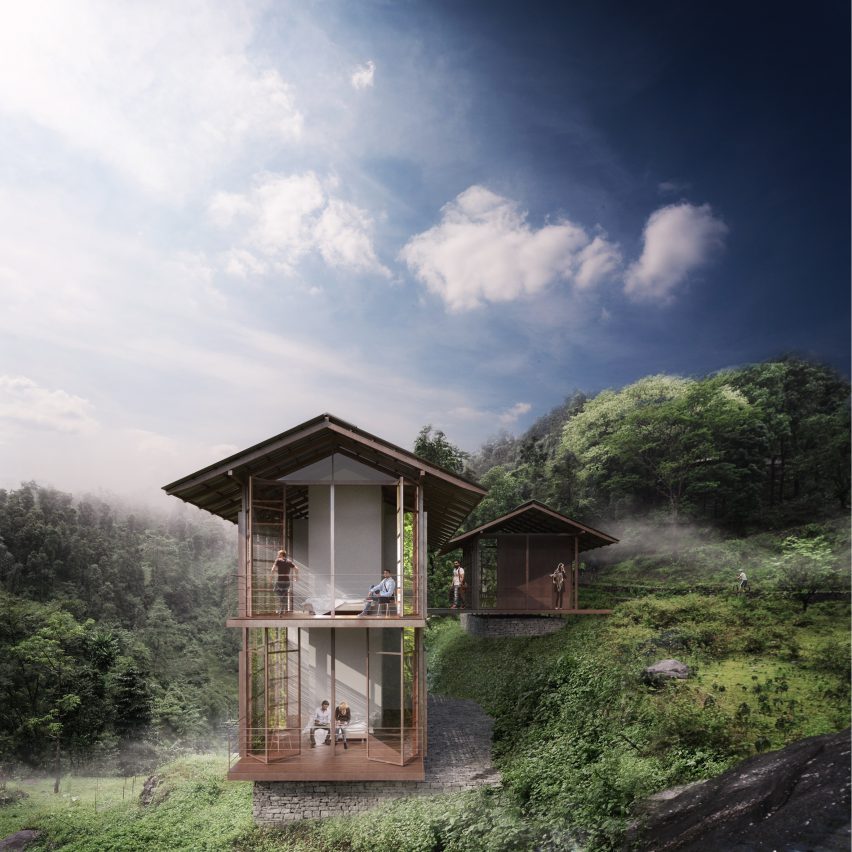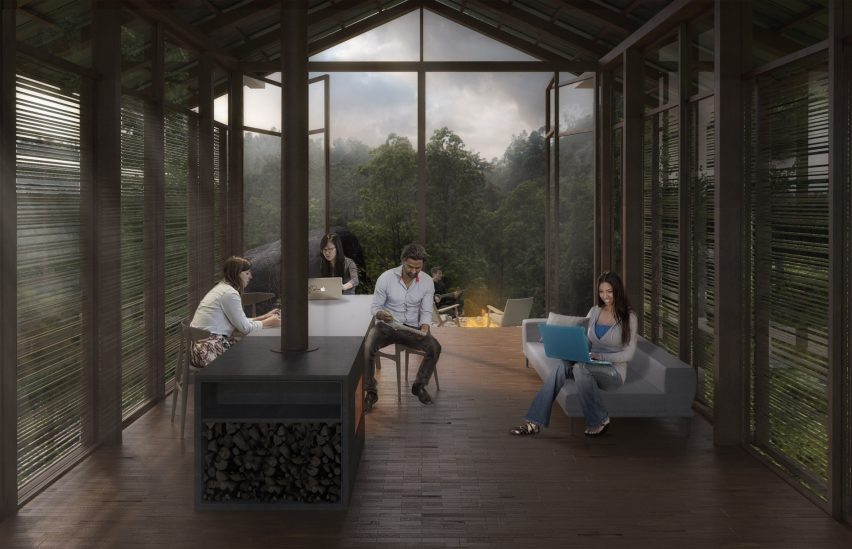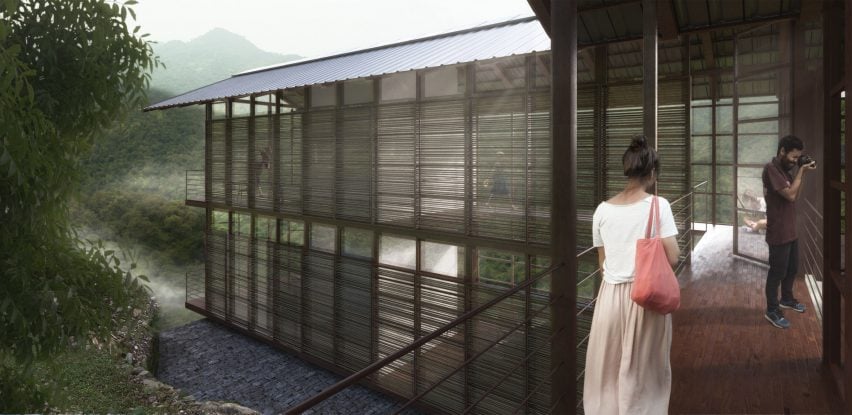Carlo Ratti building digitally connected retreat in the Himalayan mountains
Construction has started on a digitally connected co-living and co-working retreat in the Himalayas, designed by Italian architect Carlo Ratti.
Carlo Ratti Associati has teamed up with Turin-based architect Michele Bonino on the Pankhasari Retreat, a remote getaway where guests will be able to live and work like they would in a city.
Despite its position in a valley in India's Darjeeling region – surrounded by waterfalls, a fast-moving river and one of the world's tallest mountains, Kanchenjunga – it will offer high-speed internet and teleworking facilities.

Ratti said the resort comes close to the vision of the late urban designer Melvin Webber, who in the 1970s claimed "it might be possible to locate on a mountaintop and to maintain intimate, real-time and realistic contact with business or other associates".
"Though a mountaintop might be a bit extreme to some, the Himalayan valley of Pankhasari is an ideal place for staying connected and testing new longer-term concepts of international living and working, trying to build a bridge between the local and the global communities," said the architect.
Ratti, who is also a professor at the Massachusetts Institute of Technology, has worked on several projects that combine physical environments with digital systems, including a smart heating system and a digital supermarket.
The Pankhasari Retreat will combine ideas from some of these projects with regional expertise and craftsmanship.
The complex will be made up of three blocks, arranged around a set of sacred black boulders and connected by a wooden footbridge.
Buildings will be constructed from local materials – including stone, farmed teak and sissoo wood – and will incorporate typical forms, like gabled roofs and verandas.

"We wanted to oppose both architectural choices that are indifferent to their geographical context, and any uncritical cult of a local tradition" said Ratti. "The result is a more collaborative architecture, opened to the influence of people from different backgrounds and with different skills."
The lightweight structures will also be easy to dismantle, ensuring the resort has a minimal impact on the landscape.
Inside, each one will contain facilities for up to three or four residents, including living spaces arranged around a fireplace, work studios, bedrooms and bathrooms. Built-in furniture will also feature.
Ratti hopes the project will help to promote a more sustainable form of tourism.
"I think these buildings stand out as an example of how you can reconcile the opposite dimensions of local and international architecture, utilising an open-source design approach," he added.
"Pankhasari has a unique flavour, located at an equal distance between the global zeitgeist (the spirit of the time which is reflected in contemporary architecture) and the genius loci (the profound spirit of a place)."

The project is backed by developer ASCO Projects. Construction started earlier this week.
"Carlo Ratti and I started reflecting on the visions for Pankhasari about 10 years ago," revealed company CEO Chiradeep Sirkar. "Finally we are ready to make this project real, and to bring a beautiful design and deeply respectful construction to this site."
Project credits:
Architects: Carlo Ratti Associati, Michele Bonino
Client: ASCO Projects
Local architect: Alleya and Associates (Ashish Sharan Lal)
Structural engineer: Sankha Choudhuri